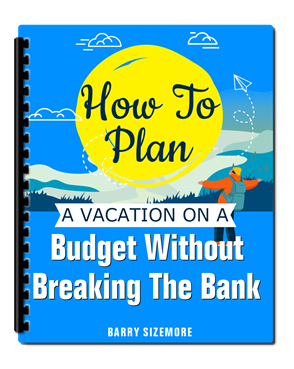Horseback riding is a one-of-a-kind adventure that allows you to connect with nature and experience the world from a fresh perspective.
Whether you're exploring scenic trails, trotting along sandy beaches, or simply enjoying the rhythm of the ride, this activity is sure to leave lasting memories.
For beginners, however, it’s important to learn a few essential tips to ensure both safety and comfort while maximizing the enjoyment of the experience.
Keep reading to discover the top horseback riding tips that will make your vacation truly unforgettable!
1)) Wear Proper Attire
The right attire is essential for a comfortable and safe horseback riding experience.
Start with well-fitted boots that have a small heel to help keep your feet secure in the stirrups.
Avoid open-toed shoes or sneakers, as they won't provide the necessary support or safety.
Long pants made of durable fabric, like jeans or riding breeches, protect your legs from chafing and scratches during the ride.
Pair these with a comfortable shirt that allows for easy movement and layering, depending on the weather.
Wearing a certified riding helmet is crucial to protect your head and ensure safety at all times.
Dressing appropriately sets the tone for a smooth and enjoyable ride, allowing you to focus on the adventure ahead.
2)) Choose The Right Horse
Selecting the right horse is a key step to ensuring a positive and enjoyable riding experience, especially for beginners.
Matching a horse’s temperament and training to your skill level is important for both safety and comfort.
Beginner riders should choose a calm, gentle, and well-trained horse that is accustomed to novice riders.
Communication with the stable staff or guide is essential, as they can provide valuable insights into the horse's behavior and compatibility with your needs.
Starting with a suitable horse builds confidence and helps foster a rewarding connection, setting the stage for a fantastic riding adventure.
3)) Listen To The Guide
A knowledgeable guide is an invaluable resource when it comes to horseback riding, especially for beginners.
Pay close attention to their instructions, as they will provide essential tips on riding techniques, safety measures, and how to communicate effectively with your horse.
Guides are also familiar with the trail conditions and can help you anticipate any challenges along the way.
Make sure to ask questions if you're unsure about anything, as their expertise can enhance your confidence and understanding throughout the experience.
Following your guide’s advice helps ensure a safe and enjoyable ride, allowing you to fully immerse yourself in the journey.
4)) Mount Correctly
Mounting correctly is an essential skill to ensure both your safety and the horse's comfort.
Begin by checking that the saddle and stirrups are properly secured, as a loose saddle can cause an imbalance.
Stand on the horse's left side, hold the reins and the saddle's pommel firmly in one hand, and place your foot into the left stirrup.
Use your other hand to grip the cantle for support as you push yourself smoothly into the saddle, avoiding sudden movements that can startle the horse.
Once seated, gently place your right foot into the stirrup and adjust your position for a balanced posture.
Mounting with care not only prevents mishaps but also establishes trust with your horse, ensuring a confident start to your ride.
5)) Hold Reins Properly
Holding the reins properly is fundamental to effective communication with your horse and ensuring a safe ride.
Begin by gripping the reins gently but firmly, avoiding overly tight or loose tension that could confuse or discomfort the horse.
Position your hands just above the saddle horn, keeping your elbows relaxed and close to your body.
Maintain a steady, even pressure on both reins to guide your horse smoothly and respond to its movements.
Avoid sudden or jerky motions with the reins, as this could startle or frustrate the horse.
Mastering this technique creates a clear and balanced connection with your horse, allowing for greater control and a more harmonious riding experience.
6)) Maintain Good Posture
Maintaining good posture while horseback riding is crucial for both your safety and the horse's comfort.
Sit upright with your shoulders relaxed and your back straight, avoiding leaning too far forward or backward.
Keep your legs gently pressed against the sides of the horse, with your heels slightly down and your toes pointing forward.
Your hands should hold the reins at a comfortable height, allowing for easy communication with the horse while staying relaxed.
Maintaining proper posture not only helps you stay balanced in the saddle but also ensures smooth and effective interaction with the horse, promoting a more enjoyable and seamless riding experience.
7)) Start With Slow Pace
Starting with a slow pace is essential for building confidence and developing a strong foundation in horseback riding.
A gentle walk allows beginners to focus on mastering basic skills such as balance, rein control, and communication with the horse.
This relaxed speed also provides an opportunity to acclimate to the horse’s rhythm and movement, making the experience less intimidating.
Gradually, as comfort and control improve, incorporating faster gaits can be introduced under proper guidance.
Beginning with a calm and steady pace paves the way for a safer and more enjoyable riding experience, ensuring both rider and horse remain comfortable and at ease.
8)) Use Gentle Cues
Using gentle cues is vital for effective communication and building trust with your horse.
Horses are highly perceptive animals that respond well to subtle, calm signals rather than harsh or abrupt commands.
Use light pressure with your legs or reins to guide the horse, and combine these actions with clear voice commands for reinforcement.
Avoid shouting or making sudden movements, as this can confuse or distress the horse.
Consistency in your cues also helps the horse understand your intentions and develop a sense of reliability.
Communicating with patience and precision fosters a strong connection with your horse, promoting a smoother and more enjoyable riding experience.
9)) Stay Relaxed
Staying relaxed while horseback riding is essential for both your comfort and the horse's confidence.
Tension in your body can unintentionally signal anxiety to the horse, potentially making it uneasy or unresponsive.
To remain calm, focus on maintaining steady breathing and a loose, natural posture.
Keep your hands, legs, and body movements gentle to encourage the horse to feel at ease.
Avoid overthinking or second-guessing your actions, as this can lead to stiffness and lack of coordination.
Staying composed fosters a positive atmosphere for the ride, enabling both you and the horse to enjoy a harmonious and fulfilling experience.
10)) Avoid Sudden Movements
Avoiding sudden movements is critical for ensuring a safe and pleasant horseback riding experience.
Horses are highly sensitive animals that can easily become startled by abrupt actions, leading to potential miscommunication or unsafe situations.
Riders should make all movements—whether adjusting their position, handling the reins, or issuing cues—smooth and deliberate to convey calmness and stability.
When transitions, such as going from a walk to a trot, are approached with gradual and predictable actions, it reassures the horse and enhances trust between rider and animal.
Consistently maintaining smooth, controlled movements fosters a confident and cooperative ride, ensuring both rider and horse stay comfortable and secure.
11)) Watch Your Surroundings
Watching your surroundings is an essential aspect of safe and mindful horseback riding.
Staying aware of your environment allows you to anticipate obstacles, changes in terrain, and other potential hazards that could affect the ride.
Keep an eye on the trail ahead while remaining aware of other riders, animals, or sudden movements in the vicinity.
This attentiveness not only ensures your safety but also helps the horse feel more secure, as it often relies on the rider for guidance and reassurance.
Being vigilant and mindful of your surroundings creates a safer and more enjoyable experience for both you and your horse.
12)) Keep Heels Down
Keeping your heels down is a fundamental principle in horseback riding that significantly enhances stability and control.
This posture helps anchor your weight into the stirrups, creating a secure seat that improves balance and minimizes the risk of losing your footing.
By keeping your heels lower than your toes, you encourage proper alignment of your legs, which aids in maintaining a steady connection with the horse.
This position also allows you to absorb the horse’s movements more effectively, reducing strain on your joints and preventing unnecessary tension.
Practicing this technique consistently ensures a more balanced and confident ride, benefiting both rider and horse.
13)) Communicate With Horse
Communicating effectively with your horse is a key aspect of building a strong and harmonious partnership.
Horses interpret a variety of signals, including body language, voice commands, and touch, so it’s important to ensure your cues are consistent and clear.
Speak in a calm, steady tone to provide verbal guidance, while your body movements and rein handling should align with the instructions you’re giving.
Take the time to observe your horse’s reactions and adjust your approach if needed, as this promotes mutual understanding and trust.
Establishing clear and consistent communication helps create a respectful and positive connection, fostering a more enjoyable experience for both rider and horse.
14)) Dismount Safely
Dismounting safely is an essential skill that ensures both you and the horse are protected from unnecessary injury or discomfort.
Begin by halting the horse in a secure and calm location, ensuring it remains steady before proceeding.
Maintain control of the reins as you swing one leg carefully over the horse’s back, avoiding abrupt motions that might startle or unbalance it.
Use your hands to steady yourself while gently lowering to the ground, ensuring a smooth and controlled descent.
Practicing safe dismounting procedures builds confidence and trust between you and the horse, reinforcing a positive and secure riding experience.
15)) Enjoy The Experience
Taking the time to enjoy the experience of horseback riding is just as important as mastering the technical skills.
The bond forged between you and the horse, along with the tranquility of the natural surroundings, creates a unique sense of connection and relaxation.
Focus on being present in the moment, letting go of distractions, and appreciating the rhythm of the ride.
Whether you are on a peaceful trail or practicing in an arena, the act of riding offers a rewarding combination of mindfulness and adventure.
Fully immersing yourself in the experience enhances the joy and fulfillment that horseback riding can bring.
Conclusion
Horseback riding is a remarkable activity that combines skill, trust, and connection between rider and horse.
From practicing safe techniques to fostering effective communication, each element contributes to a rewarding and harmonious experience.
By staying mindful, prioritizing safety, and appreciating the unique bond formed with the horse, riders can fully enjoy the many physical, mental, and emotional benefits this activity has to offer.
Each ride presents an opportunity for growth, relaxation, and adventure, creating memories that last a lifetime.
Download Our Free E-book!







